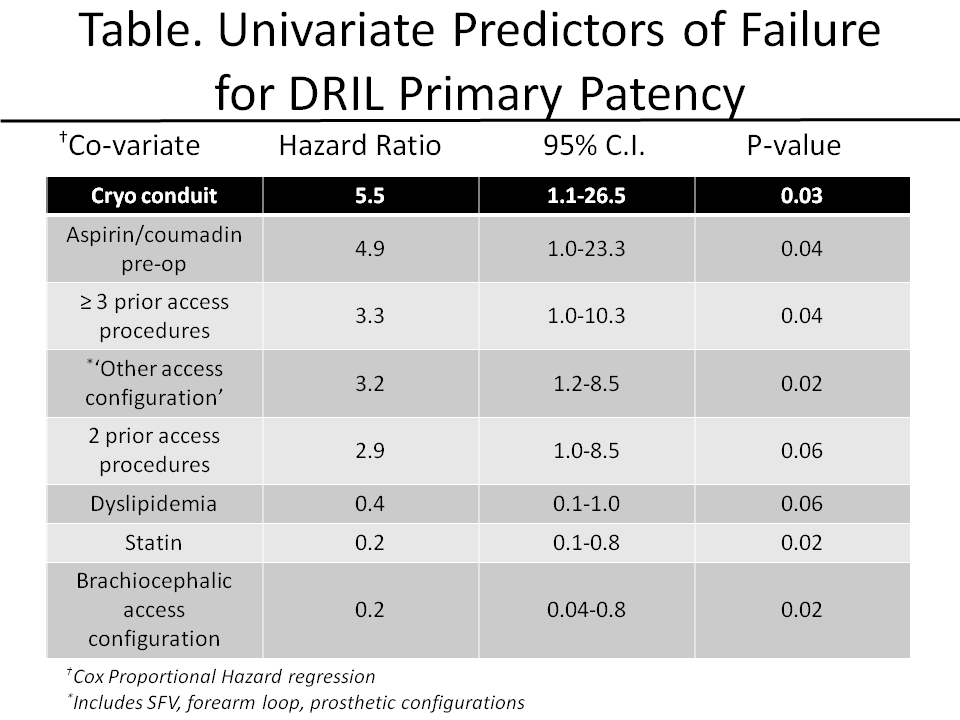|
|
 |
Back to Annual Symposium Program
Prediction of Graft Patency and Mortality after Distal Revascularization and Interval Ligation for Hemodialysis Access Related Hand Ischemia
Salvatore T. Scali, M.D., Catherine K. Chang, M.D., Daniel Raghinaru, Ph.D., Mike Daniels, Ph.D., Adam W. Beck, M.D., Robert J. Feezor, M.D., Peter R. Nelson, M.D., Scott A. Berceli, M.D.,Ph.D., Thomas S. Huber, M.D.,Ph.D..
University of Florida-Gainesville, Gainesville, FL, USA.
OBJECTIVES:The goals for management of access related hand ischemia (ARHI) are to reverse symptoms and salvage the access. Many procedures have been described, but the optimal treatment remains unresolved. In an effort to guide clinical decision making, this study was undertaken to document our outcomes for distal revascularization and interval ligation (DRIL) and identify predictors of bypass patency and patient mortality.
METHODS: A retrospective review was performed of all patients who underwent DRIL (1997-2010). Bypass patency and mortality were determined using life-tables and predictors determined using univariate and multivariate analyses.
RESULTS: 132 DRILs were performed in 126 patients (female-59%, diabetes-69%, age 57±12yrs (mean+/-SD)) following brachial artery-based access with a 27% (19% wound) morbidity and a 2% 30-day mortality. Mean follow-up is 15 months. The wrist/brachial and digital/brachial indices increased 0.31±0.25 and 0.25±0.29, respectively. Symptoms resolved in 82% of patients and 85% were able to continue using their access. Primary and primary-assisted patency was 77%, 79% and 68%, 70% at 1 and 5 years. Univariate predictors of patency failure were cryo-preserved conduit, pre-operative ASA +coumadin use, a non-brachial basilic/cephalic access configuration, and ≥2 prior access attempts. Pre-operative statin therapy, saphenous vein conduit, and brachiocephalic access were predictors of improved bypass patency (Table). Mortality was 28% and 79% at 1 and 5 years, respectively. Multivariate predictors of mortality were composite conduit, complication from DRIL, and an indication of grade 3 ischemia.
CONCLUSIONS: DRIL effectively improves distal perfusion and reverses the symptoms of ARHI while salvaging the access. However, given the high mortality of this patient population, pre-operative risk stratification is critical for optimal utilization of this remedial strategy.

Back to Annual Symposium Program

|


